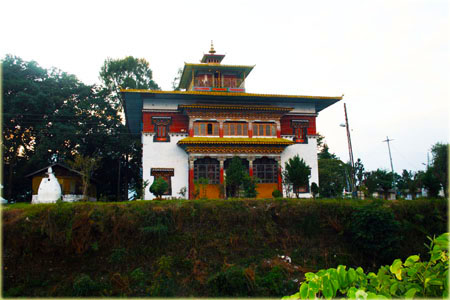History:
Legend has it that Tashiding hill in west Sikkim is the navel point of the
holy places in Sikkim from a religious point of view. A Buddhist Tantrayana Master called ‘Guru Padmasambhava’ had made his miraculous visit to this hill in 8th century A.D, along with his retinue of followers and recognized it as a heart of the holy places in Sikkim.But the damages by frequent earthquakes resulted several wall cracks, following which Lamas had to rebuild it in
1995 with the financial help from the Sikkim State Government.Presently, the monastery has
60-70 monks. |
 |
Like Pemayangtse, it is a parent monastery of the monasteries following
Jhang-Ter lineage of Nyingmapa Sect in Sikkim.
The most important festival of this Gonpa is ‘Bhumchhu’, a sacred holy water ceremony, which is held annually and attracts
a large number of pilgrims and devotees from Bhutan and other adjoining areas.
Lama Ngadag Sempa Chhenpo introduced Bhumchhu ceremony in 17th century
with a gift of a precious vase that he had brought from Tibet. The most holy Chhoedten(Stupa) in Sikkim is
also at Tashiding. So sacred is it that the mere act of beholding it would cleanse all sins according to its name. Its full title is
Thong-Warang-Drol and bears the meaning “Saviour by mere sight”. It contains the precious relic of Mythical Buddha “Wod-Srung” antecedent to
Buddha Shakya Muni. Because of this reputation, this Stupa became a sacred object for pilgrims.
Further, Lamas built many other sacred Stupas in the premises of this Chhoedten for different purposes of spiritual benefit for the devotees. Later, the lamas according to the order and at the expense of donating pilgrims built “Mendang” around Tashiding Chhoedtens. The
Mendang bears mystic charms of the protective divinities of Lamaism and the pictures of the protective divinities carved on stone blocks.
At present, the above Chhoedtens and Mendang monuments have become the most important religious heritages of Sikkim as well as of the Himalayas. |